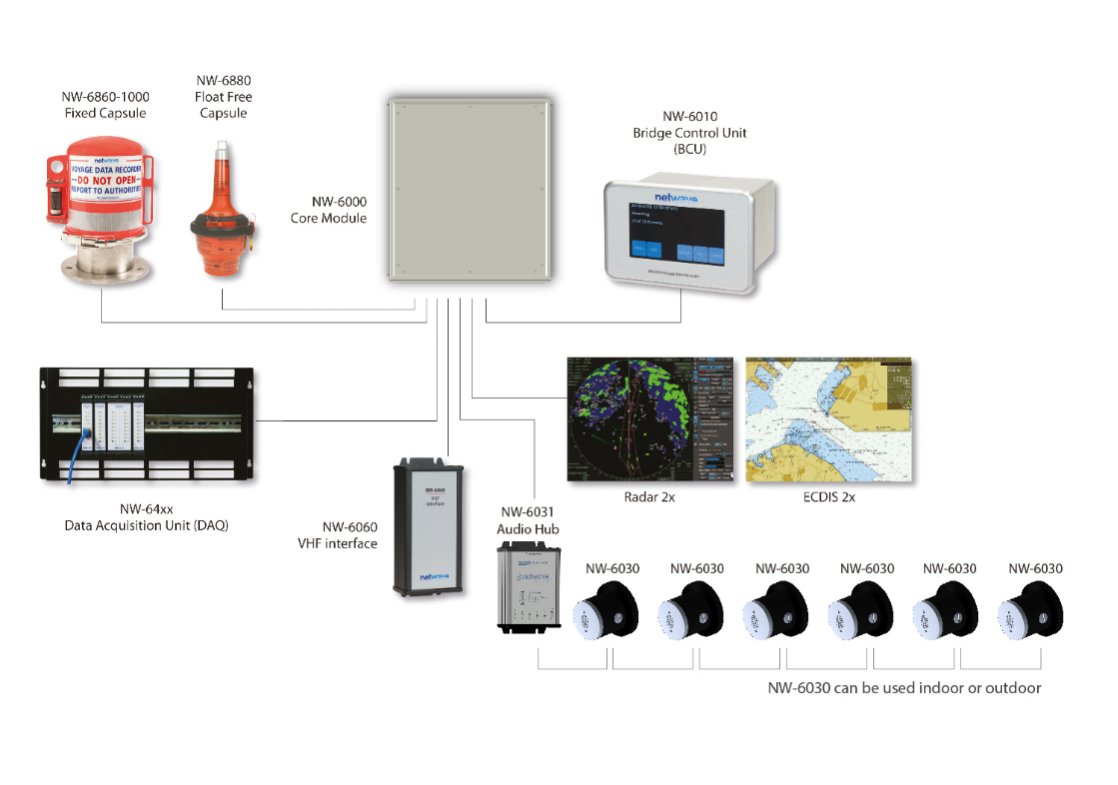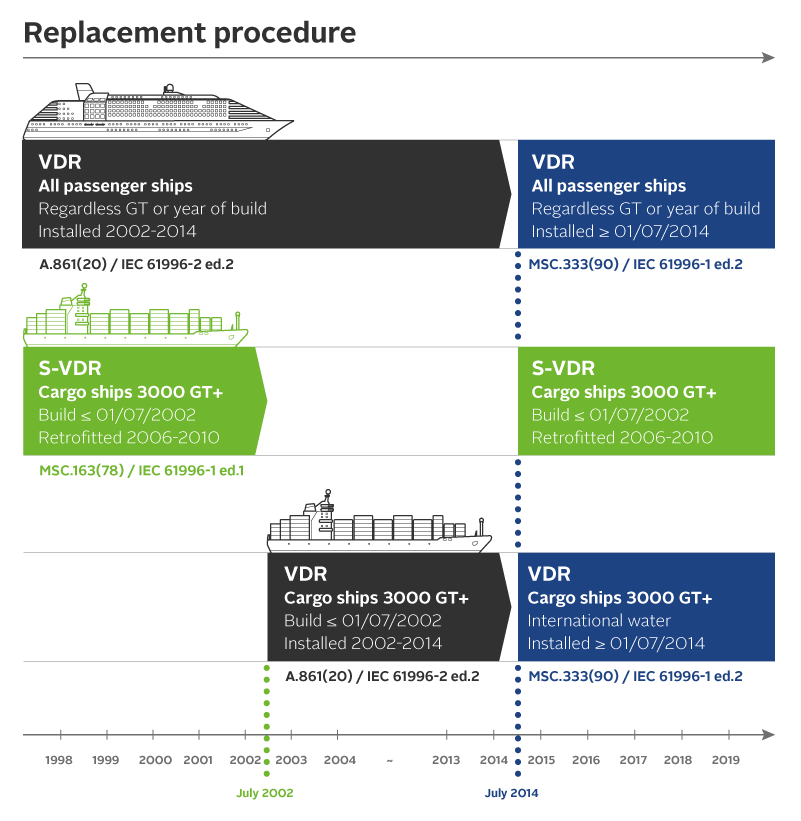Often considered similar to airplane black boxes, a Voyage Data Recorder is a system fitted onboard ships that record the various data on a ship which can be used for reconstruction of the voyage details and vessel information during an accident investigation.
The IMO defines the Voyage Data Recorder as a system, including any items required to interface with the sources of input signals, their processing and encoding, the final recording medium, the playback equipment, the power supply and dedicated reserve power source.
VDR information is stored in a secure and retrievable form, capturing the movement, status, position and command and control of a ship. This information can be used during any subsequent safety investigation to identify the cause of the incident. As well as incident investigation, VDRs are increasingly used for preventive maintenance, performance efficiency monitoring, damage analysis, accident avoidance and training purposes to reduce running costs, improve safety and provide greater onshore visibility of how the vessel is being operated.

